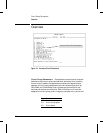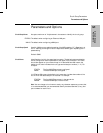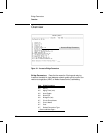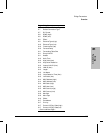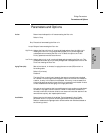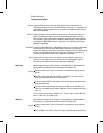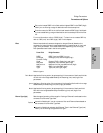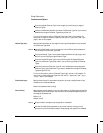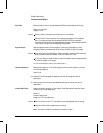
Parameters and Options
Action
Determines the disposition of frames meeting the filter rule.
Default: Drop
Drop
Discards a frame meeting the filter rule.
Accept
Relays a frame meeting the filter rule.
High Priority
Assigns the first priority to all incoming bridged packets from the LAN circuit
meeting the filter rule. This gives packets a higher priority than bridged and
routed packets not meeting the filter rule. To select this option, the Traffic
Priority parameter must be set to Normal.
Low Priority
Assigns last priority to all incoming bridged packets meeting the filter rule. This
gives packets a lower priority than any bridged and routed packets from the LAN
circuit not meeting the filter rule.
Aging Timer (min)
Sets a time interval, in minutes, for aging the source route (SR) entries in a
forwarding table.
Default: 5 (minutes)
Disable: 0
The Aging Timer controls how frequently the source route entries are checked
for removal from the bridge forwarding table. Each time a frame is forwarded to
a station, its entry in this table is time-stamped. If the entry is not accessed for a
time period equaling twice this time, the entry is removed from the table. A value
of zero disables the timer and aging is no longer performed.
Any source-routing station that is moved from one ring to another must be timed-
out before it can again communicate via TRNSB. In most cases, the default (5
minutes) is sufficient. A shorter duration can cause non-functional stations to be
removed more quickly, but impacts performance.
Auto Enable
Determines the initial state of the bridge. The bridge-specific Auto Enable
parameter works in conjunction with the global Auto Enable parameter to
enable or disable the bridge application software when the node boots based on
the following criteria.
Bridge
Parameters
6
Bridge Parameters
Parameters and Options
6-5




